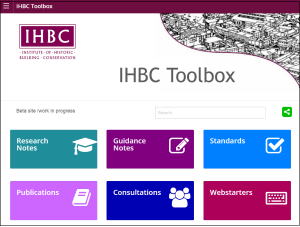 IHBC’s Guidance Note (GN), ‘Community Infrastructure Levy and Historic Buildings’ has been published on the IHBC’s Toolbox.
IHBC’s Guidance Note (GN), ‘Community Infrastructure Levy and Historic Buildings’ has been published on the IHBC’s Toolbox.
Bob Kindred, IHBC Research co-ordinator and author of this Guidance Note, said: ‘This Guidance Note looks at some examples of current practice regarding the use of (or exemption from) the Community Infrastructure Levy (CIL) with regard to heritage assets.
‘Additional examples of current practice would be appreciated for incorporation into a future update.’
IHBC Director Seán O’Reilly said: ‘IHBC Research Notes are produced as part of an integrated resource offering online support for conservation practitioners, the IHBC’s ‘Toolbox’.’
‘The Toolbox is being developed to help inform, advise and guide anyone with specialist interests in built and historic environment conservation. Already it offers a wide range of basic resources – the ‘tools’ in the toolbox – from primary research and guidance produced by or on behalf of the IHBC, to technical, academic and practice advice supported or endorsed by the institute.’
Key points in the Guidance Note include:
- The Institute considers it good practice that local authority heritage management professional be involved throughout the preparation and implementation of a draft Charging Schedule as they are often best placed to advise on local historic environment issues.
- The use and effectiveness of CIL by local planning authorities has been mixed and members may be aware that the Department of Communities and Local Government CIL Review Group carried out an evaluation of the future for CIL in the early part of 2016, the conclusions and revised guidance of which are still awaited.
- CIL is not as an effective stimulus for regeneration and the reuse of vacant historic buildings (and their immediate setting) as it has the potential to be, and so it is in relation to conservation and management of heritage assets that current practice regarding CIL within local authorities could be better understood and operated.
- The Institute’s view at the time of the DCLG consultation was confined to one key point, that CIL as a betterment tax, raises considerable funds via local planning authorities (and parish councils, where a neighbourhood plan is in place) in areas of high growth but contributes to inflationary pressures on land; whereas CIL raises little or nothing in areas of the country where the land economy is weak and in recognition of this a zero rate has sometimes to be adopted.
See more on the Guidance Note in the Toolbox

